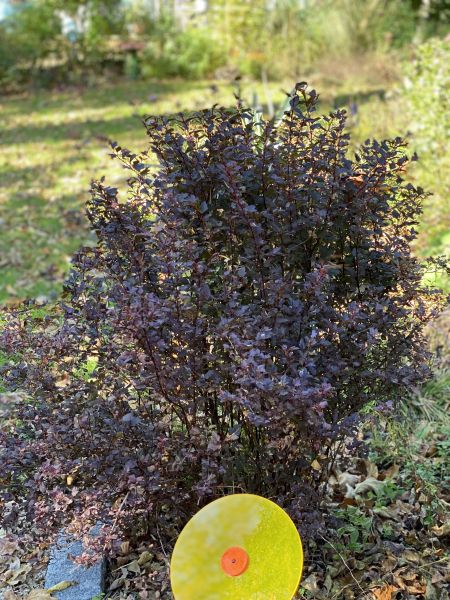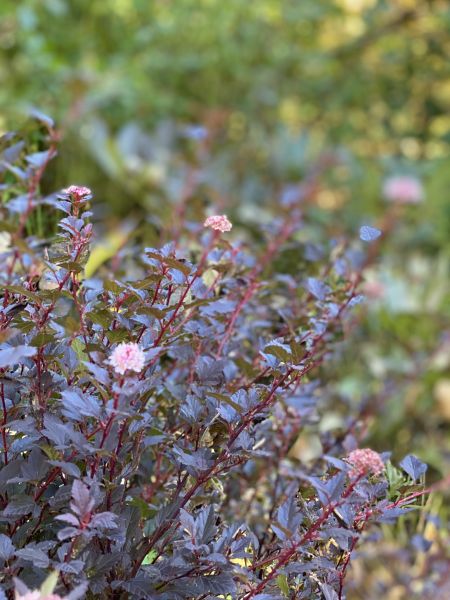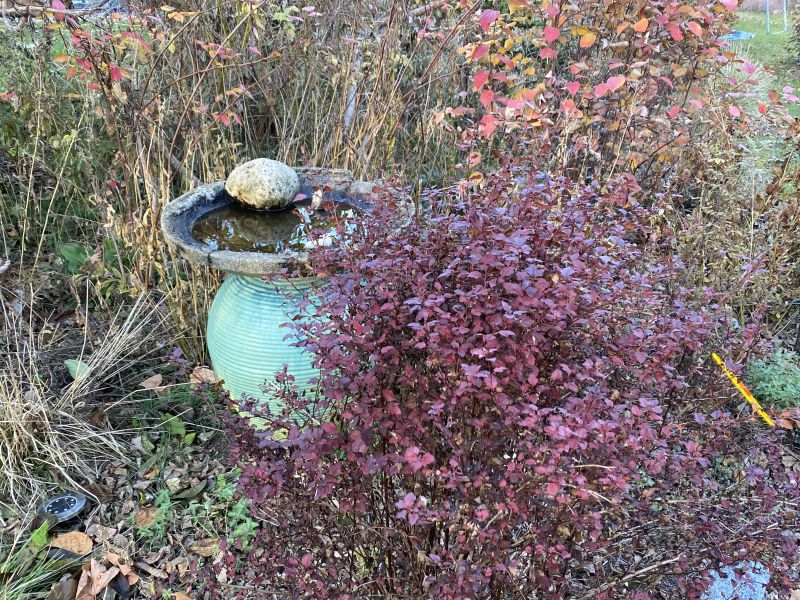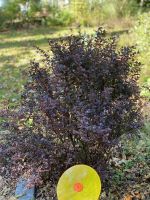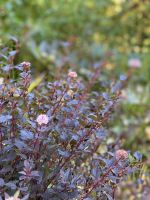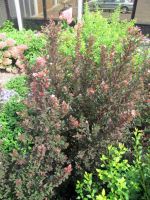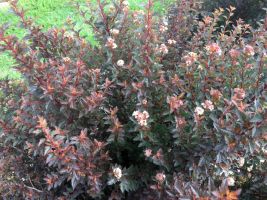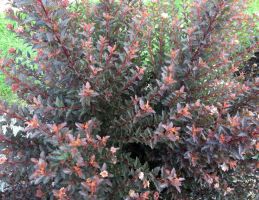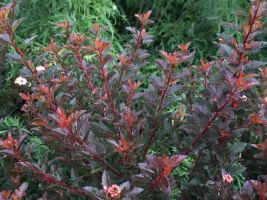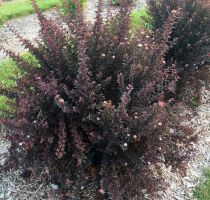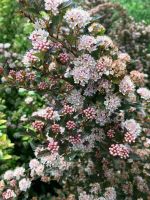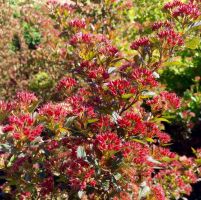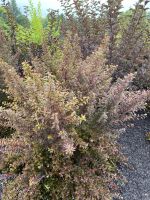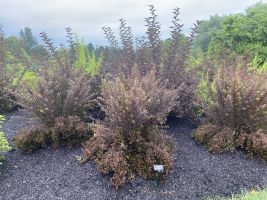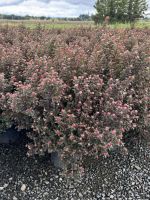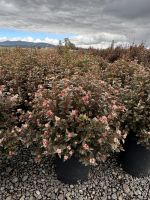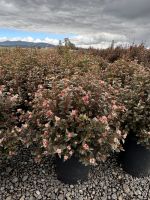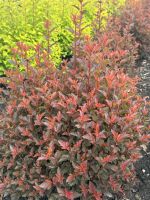Physocarpus opulifolius Sweet Cherry Tea™
The first re-blooming ninebark!
It’s easy to see how ninebarks have become one of our most beloved natives. This new free-flowering selection from breeder David Zlesak has more bells and whistles than we can count! Delicate, feathery leaves begin the spring season with a warm, reddish-orange glow before aging to a rich purple. Dark-pink buds open to multiple delicate, pink flowers clustered together at the tips of every branch. As the petals fall, they give way to showy, rose-red fruits that hold their color for a few weeks in late spring. Stunning!
But wait…there’s more! The re-blooming trait that Sweet Cherry Tea™ exhibits is extremely rare in ninebarks, giving us much more to celebrate! In midsummer, the flowering starts again with vigorous shoots terminating in more pink flower clusters. Exceptional branching that follows allows for many side shoots with warm, colored tips to develop and increase plant density—minimizing pruning and contributing to the various shades of…Sweet Cherry Tea™!
Who Am I?
-
Common Name:Sweet Cherry Tea ninebark
-
Botanical Name:Physocarpus opulifolius ‘ZLEBic5’ PP31235
-
Type:Shrub
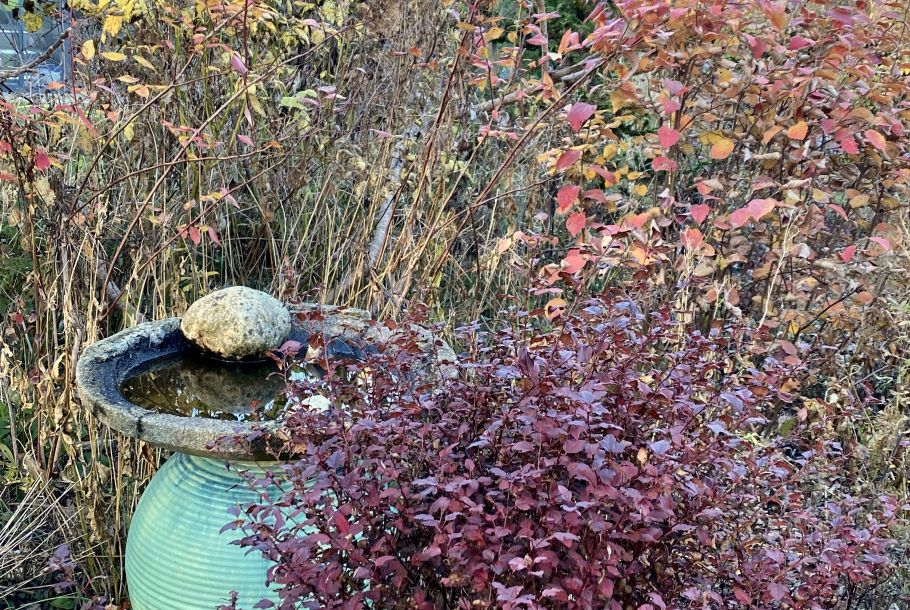
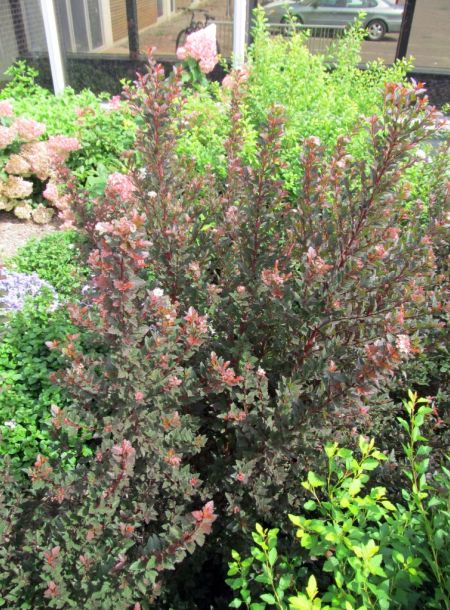
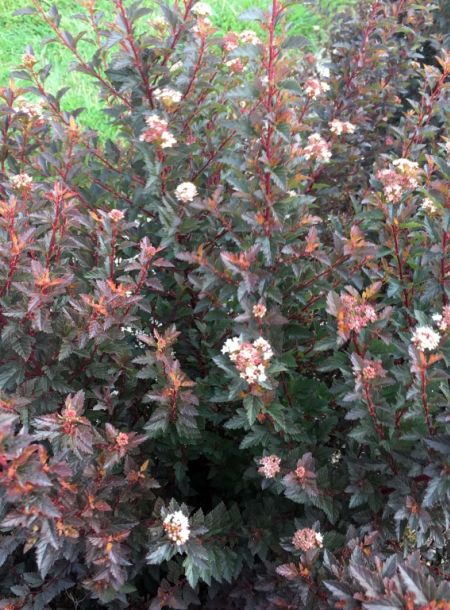
Cultural Details
TYPE
-
Light:Full sun
-
Soil:Average garden soil
-
Moisture:Moist, but well drained
-
Hardiness Zone3-7
-
Bloom Time:Summer
-
Size:3-4' tall by 3-4' wide
-
Diseases & Pests:None known
What Makes Me Special?
Landscape Use
Pruning
Ninebarks flower in eary summer and fruit in the fall. To encourage flowering, prune in late fall.
Propagation
Who Am I?
-
Common Name:Sweet Cherry Tea ninebark
-
Botanical Name:Physocarpus opulifolius ‘ZLEBic5’ PP31235
-
Type:Shrub
Image Library
Download hi-res files by clicking the blue button next to the image.
